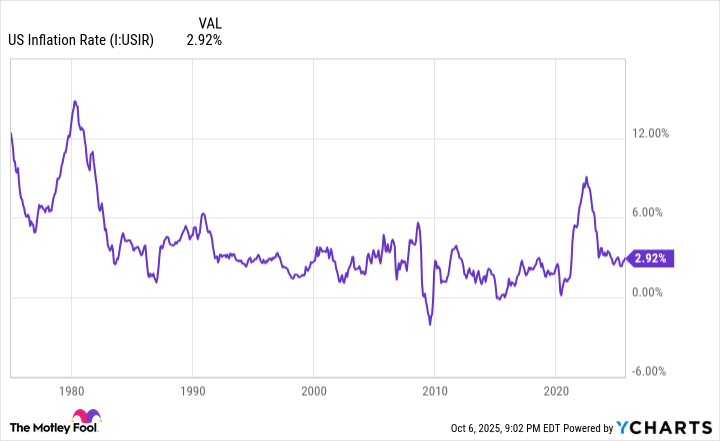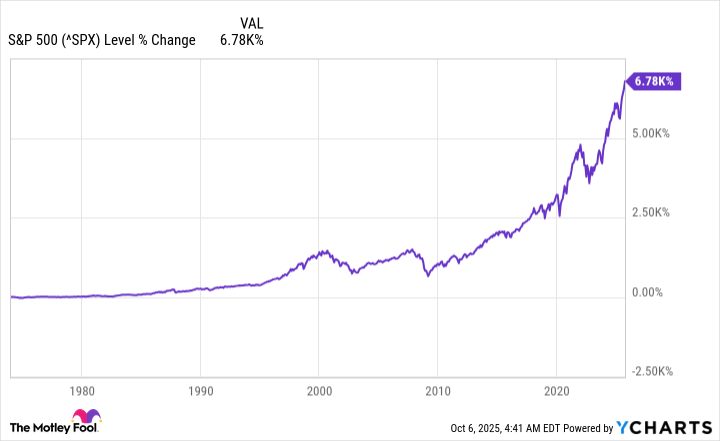WASHINGTON — In 2016, the nonpartisan Pew Research Center surveyed the American electorate and discovered levels of partisan mistrust and animosity worse than any in a generation. The findings helped explain how tribal American politics have become and the rise of a political figure, President Trump, who has made exploiting those divisions his main stock in trade.
Three years later, Pew is out with a new report, based on a survey of 9,895 American adults. Its conclusion? Partisan divisions have gotten worse.
Just over half of people who identify themselves as Republicans say that Democrats are “more immoral” than other Americans, for example. Just under half of people who identify themselves as Democrats say the same about Republicans. In both cases, the share holding that view of the other side has increased since 2016.
And this latest survey was conducted in early September — before the impeachment debate took hold.
IT’S NOT JUST TRUMP
Democratic figures, most notably former Vice President Joe Biden, often blame Trump for the divisions in American society. But while the president has definitely stoked the fires of grievance, the earlier Pew study serves as a reminder that the blaze existed before him — he probably wouldn’t have captured the Republican nomination without it.
Partisanship has raged out of control because the two party labels have become proxies for so many preexisting divides. Democrats have become a party of a racially diverse, urban, coastal population, much of which is unmoored from traditional religious practices and accepting of immigration and dramatic changes in gender roles and sexual mores. Republicans are increasingly the party of older, white, rural conservatives, suspicious of urban elites and feeling threatened by immigrants and what they see as a decline of traditional morality and social order.
The breadth and bitterness of the partisan division explains why Trump is so unlikely to lose the support of his core voters in the current impeachment debate — it’s not some special magic of his own so much as the dislike, often revulsion, they feel toward the other side.
Indeed, the fact that, despite partisanship, a significant minority of Republicans currently say they find Trump’s conduct in the Ukraine scandal “troubling” — about one in five in the latest Fox News poll, for example — is a strong indicator of just how serious his problems are.
Not all partisan division is a bad thing. Just a couple of decades ago, a lot of Americans thought the two parties didn’t differ much. Only about a third of Americans saw real differences between Democrats and Republicans through much of the 1980s and ’90s and on into the early years of the current decade.
Voters need “a choice, not an echo,” the conservative activist Phyllis Schlafly famously declared half a century ago in an assault on liberal Republicans. Well, we got that. Today, “liberal Republican” is an oxymoron and fewer than one in 10 Americans think the two parties have “hardly any” difference.
Now, a large majority of Americans feel the difference has gone too far.
On both sides of the aisle, a large majority of Americans see partisan division as a problem: More than 70% say voters in both parties “not only disagree over plans and policies, but also cannot agree on the basic facts.” More than 80% see partisan division as a cause of concern.
But that concern doesn’t mean either side is suddenly about to lower tensions.
The two parties are not strictly mirror images of each other. By most measures, Republicans are somewhat more negative about Democrats than the other way around — 63% of Republicans see Democrats as “more unpatriotic” than the rest of the country, for example, and almost half of them see Democrats as lazier.
Democrats, in turn, see Republicans as “more closed-minded” than other Americans, with three-quarters of Democrats holding that view.
And Democrats are somewhat more open to compromise — at least in the abstract. Almost six in 10 say it’s important for their presidential candidates, if elected, to find common ground with Republicans on policies even if that means giving up some things Democrats really want; about four in 10 say they should push hard for things the party wants, even if that means less gets done.
Among Republicans, the split is more even, with slightly more saying Trump should push hard for things the GOP wants, even if that means less gets done.
But on both sides, the level of animosity — already high in 2016 — has grown during the Trump years. Americans who pay the most attention to politics have led the way. They are the most partisan. They’re also the most likely to express negative views about the other side.
And while the ranks of self-described independents have grown markedly in the last decade, that doesn’t represent a way out of the partisan divide. The vast majority of independents lean toward one party or the other, and those leaners are about as likely as partisans to express negative views of the other side. What makes them distinctive is that leaners are more likely to also express negative views about their own side, as well.
The Pew survey was conducted Sept. 3-15. It has a margin of error for its full sample of 1.5 percentage points in either direction.
ARRESTS BRING NEW TWIST TO IMPEACHMENT CASE
The Ukraine scandal — the focus of the impeachment case against Trump — continues to develop at startling speed. On Thursday, the case took what could prove to be a significant turn when two men who worked with Trump’s lawyer, Rudolph W. Giuliani, were arrested on campaign finance charges.
As Eli Stokols and Alexa Díaz wrote, the men, Lev Parnas and Igor Fruman, were accused of several illegal acts, but the one that most directly connects them to the current case is that they allegedly provided campaign contributions to Pete Sessions, who at the time was a powerful Republican member of the House, to get him to help in a campaign to oust the U.S. ambassador to Ukraine, Marie Yovanovitch.
She was ultimately removed from her post this spring, and House investigators want to know if that happened because she was opposing Giuliani’s efforts to get Ukraine to help Trump by announcing an investigation of Joe Biden and his son, Hunter Biden.
In the meantime, a defiant White House says it won’t participate in what Trump’s White House counsel, Pat A. Cipollone, called an “unconstitutional” impeachment inquiry. In a lengthy letter, Cipollone said Trump should be allowed to cross-examine witnesses, receive transcripts of testimony, have access to evidence the House collects and have counsel present during questioning, Noah Bierman, Sarah Wire and Díaz reported.
Legal scholars say that strategy is on shaky constitutional grounds, David Savage reported, but as is usually the case with Trump, the legal arguments may be secondary to the political goal of rousing his base.
The moves took place just days after a second whistleblower emerged in the impeachment inquiry. As Laura King wrote, the lawyers who represent the initial whistleblower in the case said Sunday they now have “multiple” complainants.
Trump has tried to argue that during his fateful phone conversation with Ukraine’s president that sparked the impeachment inquiry, he was appropriately trying to battle corruption and that he has an “absolute right” to do so, Bierman reported. He also wrote about the millions of dollars that Trump’s children are taking in overseas even as he attacks Biden’s son.
What was Joe Biden’s actual connection with Ukraine? Tracy Wilkinson in Kyiv examined his actions as vice president.
One skirmish point in the House is over the refusal of Speaker Nancy Pelosi (D-San Francisco) to hold a full vote on the House floor to open the impeachment inquiry. A vote of that sort took place in both the Richard Nixon and Bill Clinton impeachment cases, but Pelosi notes there’s no rule requiring such a vote. One reason Pelosi doesn’t want a floor vote: It could open the way for Republicans to demand independent subpoena power, which they don’t currently have, Wire reported.
Democrats want to stop Republicans from hijacking the impeachment investigation by launching their own probes into the investigators. That’s already happened at the Justice Department, Del Wilber wrote.
LONG HISTORY OF WHISTLEBLOWERS
Whistleblowers are as American as apple pie, Laura King writes. The first U.S. whistleblower case dates to 1777 — before there was a Constitution — when 10 U.S. Navy sailors reported their commandant for brutal treatment of captured British sailors and won protection from the Continental Congress.
BIDEN CALLS FOR IMPEACHMENT
After considerable hesitation, Biden joined most of the rest of the Democratic presidential field and called for Trump’s impeachment. Of Trump’s actions, he said, “It’s wrong. It’s un-American.”
Trump escalated his rhetoric saying in tweets Sunday that Pelosi and House Intelligence Committee Chairman Rep. Adam B. Schiff (D-Burbank) committed “treason” and should be “impeached.”
Most votes in the House are already nailed down. Texas Rep. Will Hurd, a Republican and former CIA officer is an exception. That makes him one of the most keenly watched House members, Molly O’Toole wrote.
ECONOMIC TROUBLES
While impeachment gets all the headlines, a quieter development could endanger Trump’s reelection: U.S.
manufacturing is now officially in recession, Don Lee wrote. As measured by the Federal Reserve, manufacturing output shrank over two straight quarters this year. That’s the common definition of recession.
Because most of the U.S. economy involves services, not manufacturing, a recession in the factories may not have as much national impact as it might have a few decades ago. But it could still be critical in some important states.
Trump might get good news on a different economic front, however: Democrats are warming to Trump’s revised NAFTA trade deal after Mexico pledged labor reforms, Jennifer Haberkorn wrote.
THE DEMOCRATIC CAMPAIGN
Seven years ago, Biden’s decision to publicly back same-sex marriage made major news, putting him briefly ahead of President Obama, who had not yet taken that step. This week, Democratic candidates held a televised forum on LGBTQ issues and vied to announce the most sweeping plans to reverse Trump’s rollback of LGBTQ rights, Michael Finnegan wrote.
Sen. Dianne Feinstein officially backed Biden for president, snubbing her fellow California Democrat, Sen. Kamala Harris, Melanie Mason reported.
Sen. Bernie Sanders set off a scramble by saying he would scale back campaigning after his heart attack, Finnegan reported. Sanders’ campaign spent much of the week trying to fend off rumors that he might drop out of the race.
Sen. Elizabeth Warren needs to connect with Latino voters. She has a plan for that, Mason and Matt Pearce reported. Whether it works remains to be seen.
JANE FONDA BACK IN D.C.
She’s 81 and launching a new activist campaign — this one on climate change. Jane Fonda talked with Evan Halper and Anna Phillips about why she is moving to Washington (for now).
A TOXIC LEGACY
Firefighting foam used at military bases has contaminated Californians’ drinking water, Phillips, David Cloud and Tony Barboza reported. No one knows how many people may be affected because the military does only limited testing off-base.
A CRISIS OF TRUMP’S MAKING
Trump’s abrupt announcement that had ordered U.S. troops to pull back in Syria, moving away from the border with Turkey, threatened chaos in the region and sparked a GOP revolt. The move essentially abandoned Syrian Kurds who have been U.S. allies to face Turkish advances alone.
As Doyle McManus wrote, the Trump Doctrine is allies can’t trust him.
LOGISTICS
That wraps up this week. Until next time, keep track of all the developments in national politics and the Trump administration on our Politics page and on Twitter @latimespolitics.
Send your comments, suggestions and news tips to [email protected].
If you like this newsletter, tell your friends to sign up.
[email protected]














